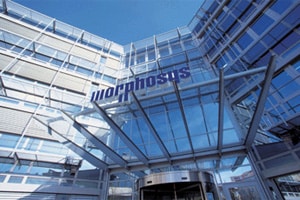
Germany’s MorphoSys has abandoned an atopic dermatitis drug licensed by Novartis in a $1bn-plus deal last year after a disappointing result in a mid-stage trial.
The decision to drop MOR106, a selective IL-17c inhibitor co-developed by MorphoSys and Belgian biotech Galapagos, was taken after an interim analysis of data from the IGUANA trial in atopic dermatitis – also known as eczema – suggested there was little chance of a positive outcome.
The futility analysis found a low probability that MOR106 would achieve a significant improvement compared to placebo on the eczema area and severity index (EASI) score, a standard measure for testing atopic dermatitis therapies.
The three partners have agreed to halt IGUANA, a second phase 2 trial called GECKO and two other earlier-stage trials as they “explore the future strategy with MOR106”.
In July 2018, MorphoSys and Galapagos handed over all MOR106 development and marketing rights to Novartis, which was looking for a companion drug for its fast-growing IL-17a inhibitor Cosentyx (secukinumab) for psoriasis, for an upfront fee of €95m.
The original license deal also discussed the potential of the drug in other diseases, without going into details, but atopic dermatitis was the driver for the deal. IL-17c is a cytokine that is over-expressed in skin epithelial cells in atopic dermatitis and also to a lesser extent in psoriasis.
At the time of the licensing deal, the partners said MOR106 was the only “publicly known” IL-17c inhibitor in clinical testing.
MOR106 would also have complemented Novartis’ histamine H4 antagonist candidate ZPL389, an orally-active drug in phase 2 development for atopic dermatitis that it acquired along with Ziarco in 2016.
An investigator-led phase 2 trial of Cosentyx in atopic dermatitis started last year which is due to generate results March 2020, but Novartis doesn’t list the inflammatory skin disorder in its own pipeline listing for the drug.
Atopic dermatitis is the most common form of eczema and can affect males and females of all ages, but often starts in childhood. Studies show at least 4-7% of adults and 15-25% of children to be affected, with a third of patients having a severe form of the disease.
Atopic dermatitis was poorly-served with therapies for years, but latterly has seen new treatment options come to market including Sanofi and Regeneron’s IL-4 and IL-13 inhibitor Dupixent (dupilumab) for moderate-to-severe symptoms and Pfizer’s Eucrisa (crisaborole) for milder forms.
There are a number of drugs coming through the collective industry pipeline as well, including IL-13 inhibitors from Dermira (lebrikizumab) and Leo Pharma (tralokinumab) and oral JAK inhibitors such as AbbVie’s Rinvoq (upadacitinib), Gilead/Galapagos’ filgotinib and Pfizer’s abrocitinib.




